By Michael G. Ankerich
Brian Labrie, a reader of this blog, made an interesting comment regarding my June post on Barbara La Marr. How ironic it is that Barbara was dubbed “The Girl Who Was Too Beautiful,” but there doesn’t seem to be a lot of candid photos of her out there in cyberworld. I challenge you to look through their collections and find some relaxed photos of this actress with her family and friends.
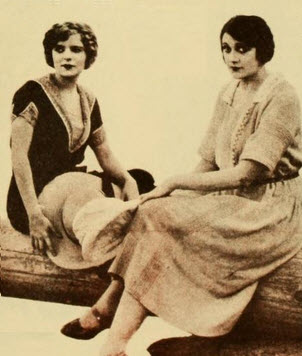
You know by now that I am fascinated by this lovely creature, plain old Reatha Watson who became world famous as Barbara La Marr. She is on the top of the list of those I would want to interview if I could find my way back to 1920s Hollywood.
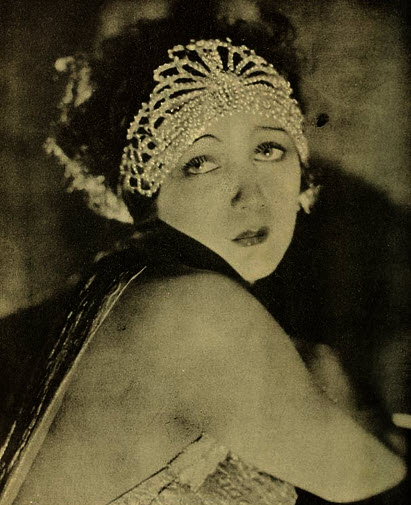
The other afternoon, I was researching an actress for my new book, Hairpins and Dead Ends: The Perilous Journeys of 18 Actresses Through Early Hollywood, when I came across an interview that British journalist Joan Drummond did with La Marr for Pictures and the Picturegoer (April, 1924). While the screen siren was great at self reflection, this is most revealing interview I have ever read with her. The story also included some lovely photographs I had never seen of Barbara. I will share some of them here.
Let’s visit Barbara through the eyes of writer Joan Drummond. I will set the stage for you.
We are high above Hollywood in Whitley Heights at the home of Barbara La Marr. It is the spring of 1924.
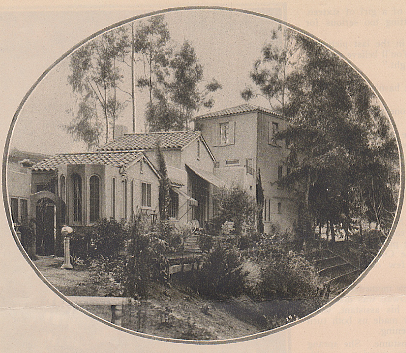
Barbara is getting ready to go abroad where she will honeymoon in Paris with husband Jack Daugherty and began work in Rome on The Eternal City. The vamp is trying to settle down to a normal home life. The year before she had secretly given birth to little Marvin and concocted a plan to “adopt” him from an orphanage in Texas.
When writer Joan Drummond showed up at the La Marr home, she first encountered a maid in a cretonne apron warming little Marvin’s bottle by the fireplace. When Drummond said hello, the woman turned from the fire. It was not a servant at all; she was face to face with La Marr herself.
Drummond writes, “I found myself looking straight into the languorous black eyes and jet-black hair of the screen’s most popular vamp. I hadn’t recognized her out of her trailing gowns, and her silks and satins, black velvet and slinky robes.”
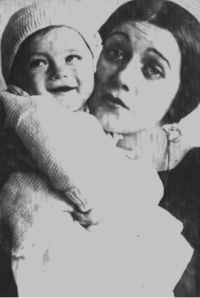
Barbara gushed about little Marvin. “Isn’t he a beauty? Isn’t he just too sweet for anything? He is going to be a fine man someday. I’m going to have him travel just as soon as he is old enough. I don’t want him to grow up like other men. I’m through with men, you know.”
The writer made note of the bitter look in Barbara’s eyes.
Drummond wrote, “I thought of Barbara’s hard fight for recognition, and of her adventures, during those first chequered years of hers in California. I felt we were getting into dangerous ground. She had such depths of experience in her eyes that in spite of her young beauty I found it hard to credit the fact that to-day she is still only twenty-five.”
Rather than follow up in the Barbara Walters style of questioning, Drummond changed the subject to Barbara’s upcoming schedule.
“Busy, my dear? the actress replied. “I’m nearly rushed to death. I’m off to Rome in a few days to make The Eternal City for Goldwyn. It’s a holiday for me in a way, and really, I do think I deserve one for I’ve been rushed from studio to studio, and lot to lot for many months without a break. ”
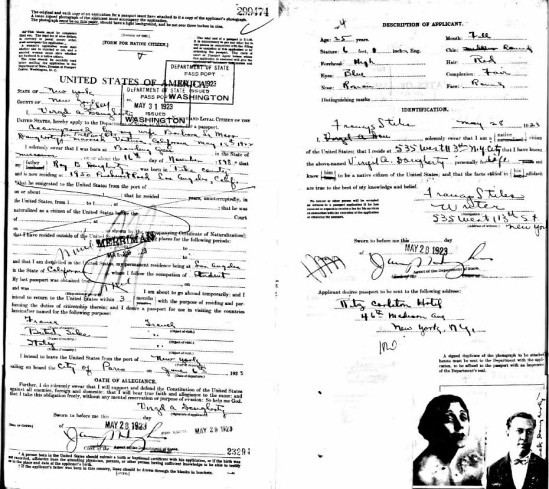
You must be tired? the reporter wondered.
“Tired? Never with work! It’s only life that makes me tired. Sometimes though my work makes me anxious. I lie awake at night and wonder whether I am really progressing, whether I am really giving the best of my soul to my art, whether I am really satisfying my public.”
As an good reporter does, Drummond let the moment of silence between them play out. Barbara opened up.
“I’ve had a lonely life,” the siren said. “I have known misery, and infidelity and soul sickness. I have known what it was to be all alone in the wide, wide world with not a human being to turn to for comfort. That is why I have brought Marvin here and given him a home. I couldn’t bear the thought of another morsel of humanity suffering as I have suffered.”
Then, Barbara plays with the facts and wanders from the truth. “For I was a foster child myself. My father was French and my mother Italian, but I never knew them. I was thrust out into the world at the age of four to earn my living as a dancer.”

Barbara told of her years as a dancer in her teens. Those years taught her about carriage and poise.
“Many a producer has asked me where I learned to walk with such ease and charm. My walk has won for me more than one part I am sure. That is no credit to myself–all dancers know the way.”
What about ambitions for acting?
“Always, in the bottom of my heart, but for many years I crushed it down,” Barbara recalled. “I have felt, too, the ache to write; and indeed I have written. It was my pen that brought me indirectly to the screen. When I had been dancing for ten years or so, the life began to sicken me. I longed to create. I longed to express myself in poetry, and I wrote quite a number of verses that were accepted by American magazines. Gradually I established a position as a writer and chance threw at my feet the offer of a post in the scenario department of the Fox Film Company.”
She wrote the scenario for His Brother’s Wife. Then she was tapped to appear before the camera.
“I have little time for writing nowadays,” Barbara said. “Since I started working in pictures, parts have come fast and furious. They say I am a type. They say they can’t think what they’d do without me now. Nita Naldi is a type, too. Consequently we must be two of the busiest women on the screen.”
She touched on two men who furthered her career in films: Douglas Fairbanks and Rex Ingram.
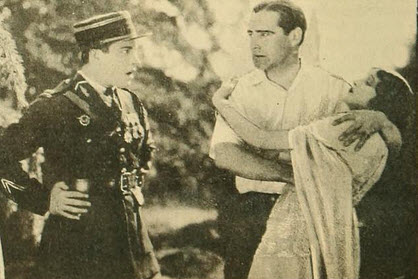
“I doubt if I should ever have been known to-day if it had not been for the piece of luck that brought Douglas Fairbanks to engage me for the part of Milady in The Three Musketeers.” Ingram discovered her in the studio cafeteria when he was filming The Prisoner of Zenda and preparing for Black Orchids. “My walk — Oh, how often I have blessed that walk — caught his eye. He promptly came across and spoke to me. I was in luck that day. He gave me first the part of Antoinette de Mauban in The Prisoner of Zenda. In due course, he carried out the contract. And meanwhile I stayed on at the Metro studios to play the vamp in Quincy Adams Sawyer.
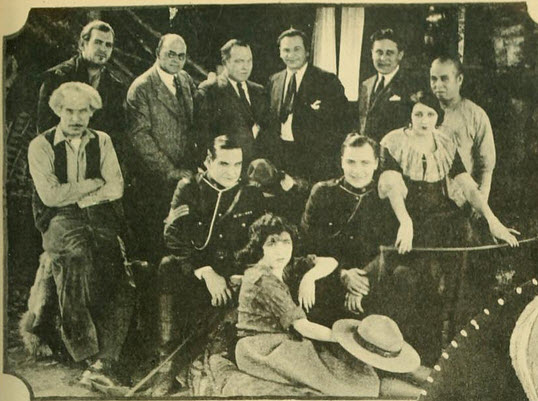
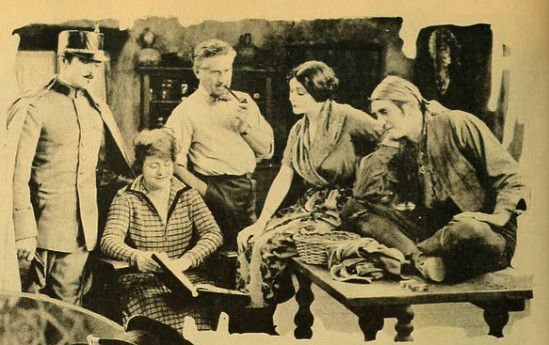
Drummond reminded her that the vamp in Quincy Adams Sawyer was played in “gingham and country mannerisms.”
“A vamp in any other dress is still a vamp,” Barbara laughed. “It’s the look in the eye that does it. Clothes don’t make much difference really.”
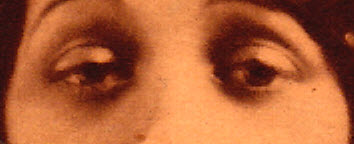
The reporter questioned Barbara about her large, soulful eyes and how they helped create her image as a screen siren. Barbara confided that producers urged her to insure them against injury from “Sunlight arcs.” She took out a £5,000 policy.
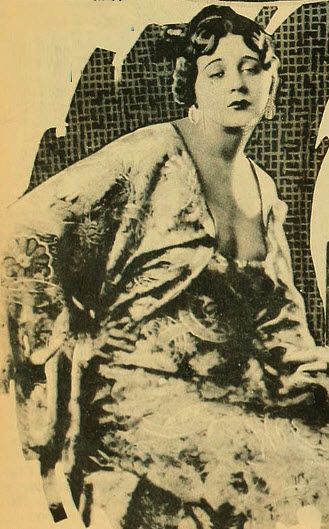
Barbara continued, “Louise Fazenda once told me that I made her think of women at tombs. I think she was right. Sometimes I seem to get outside of my own sadness and look at it, and I know then what she meant.”
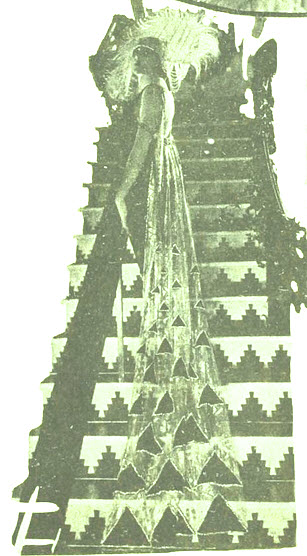
When the interview was over, Drummond descended Whitley Heights and headed down into Hollywood. She relived her experience with the screen’s most popular vamp, especially her comment of being finished with men.
The reporter concluded, “I began to have a strong suspicion that the gentle art of leg-pulling was not unknown to Beautiful Barbara!”
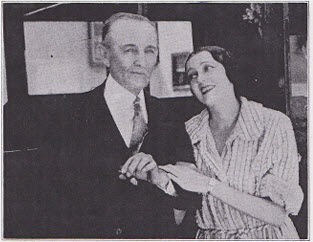

4 responses to “The Sad, Soulful Eyes of Barbara La Marr”
Thank you SO much Michael for the interview with the lovely and tragic Barbara La Marr. Even though interviews back then were so much “fluff” and hardly the truth, it gave me an light into the window of her soul.
I’ve considered writing about her– a fictionalized bio like the one I’m working on of Olive. What a juicy life she led! 🙂
Enjoyed this tremendously! I am still attempting to find any photos of Barbaras` home in Altadena.
I have never thought that Barbara was beautiful at all. Her eyebrows looked like caterpillars. Her mother was married before, and Barbara’s only full sibling was her brother William.